In traditional Chinese culture, there’s a timeless saying: “Fate, Luck, Feng Shui“.
This phrase highlights three pivotal elements that influence a person’s life journey.
- Fate: This is the inherent destiny determined by a person’s “Eight Characters of Birth” — a system based on the exact time and place they were born. These elements set the fundamental course of one’s life and are considered immutable.
- Luck: Unlike fate, luck refers to the shifts in one’s fortune over different periods. By recognizing and seizing opportunities, individuals can ride the waves of fortune, thereby altering the path of their lives.
- Feng Shui: This encompasses the influence of external surroundings, particularly one’s home and work environments. By optimizing Feng Shui, the energy of a space can be aligned with an individual’s own energy, creating harmony that enhances overall luck and well-being.
From this perspective, it’s clear just how deeply rooted the concept of Feng Shui is in Chinese thought.
Given the vast and intricate nature of traditional Feng Shui, its specialized knowledge often feels overwhelming. My goal is to distill these concepts into clear, accessible insights while retaining the rich essence of Chinese cultural heritage.
What exactly is Feng Shui? Is it simply superstition?
For centuries, Chinese culture has embraced the concept of “harmony between heaven and humanity” a belief that humans are intrinsically linked to nature.
The idea is simple: if we align our lives with the natural world’s rhythms, we can achieve harmony and benefit from all that nature has to offer.
This practice of optimizing and adapting our surroundings is what Feng Shui is all about. Seen through this lens, Feng Shui isn’t just mysticism, it’s a distinctive environmental philosophy rooted in Chinese tradition.
So, why do so many people dismiss it as superstition?
The skepticism often comes from its reliance on elements that defy conventional scientific validation — like Qi, the Five Elements, and the interplay of Yin and Yang. These concepts don’t fit neatly within the framework of modern empirical science, leading many to label them as mere superstition.
Yet, if we strip away the mystical layers and view Feng Shui through a scientific lens, we discover that it’s fundamentally a study of how humans can coexist harmoniously with their environment.
In fact, when examined from a contemporary scientific perspective, ancient Feng Shui incorporates principles from diverse fields such as geophysics, geology, environmental design, ecological architecture, and astronomy. Its scientific foundations are gradually gaining recognition among modern audiences.
Alternative Terms for Feng Shui
Feng Shui is recognized by various alternate names, shaped by cultural and historical contexts. Here are some of the most widely used terms:
- Kan Yu (堪舆): An ancient term for Feng Shui, where “Kan” symbolizes the principles of heaven, and “Yu” represents the principles of earth. Together, Kan Yu refers to the study of the natural laws of the universe and is often synonymous with Feng Shui.
- Geography (地理学): In ancient China, Feng Shui was frequently referred to as “Geography” or “Earth Science,” focused on how terrain, topography, and the environment influence human life. This differs from modern-day geography.
- Yin-Yang Dwellings (阴阳宅): Traditional Feng Shui distinguishes between “Yin Dwellings” and “Yang Dwellings.” Yin Dwellings involve the selection and arrangement of burial sites, while Yang Dwellings pertain to the design and layout of residences for the living. Together, these are collectively known as “Yin-Yang Dwellings.”
- Qing Nang Technique (青囊术): Another term for Feng Shui, derived from Qing Nang Jing, a classic text written by the Feng Shui master Guo Pu. The book remains one of the foundational texts of the discipline.
- Shape Method (形法): A subfield within Feng Shui, focusing on the study of geographical shapes and environmental features. The Shape Method examines the contours of mountains, water flows, and the external forms of buildings.
- Qi Theory (理气): A distinct branch of Feng Shui that concentrates on the movement and distribution of “Qi” (vital energy), utilizing systems such as the Eight Trigrams, Five Elements, and Four Symbols to forecast fortune and misfortune.
- Land Divination (地相术): This term emphasizes the practice of landform observation to predict auspicious or inauspicious outcomes, closely related to Feng Shui practices, and is often used to describe the activities involved in Kan Yu.
These alternative terms highlight the various dimensions of Feng Shui, each emphasizing a unique aspect of its practice and understanding within different historical and cultural frameworks.
The Global Allure of Feng Shui
As globalization deepens and cultural exchanges accelerate, Feng Shui has transcended its roots as an Eastern philosophy, becoming a globally embraced lifestyle that breaks down cultural barriers.
At its core, Feng Shui revolves around the concept of “Qi” — the flow of energy throughout the universe — and how the arrangement of one’s environment can influence this energy. Whether in Eastern or Western cultures, people everywhere are increasingly seeking ways to enhance their quality of life and optimize their environments, making the universal appeal of Feng Shui all the more captivating.
Feng Shui advocates for harmony between humans and nature, a philosophy that resonates strongly with today’s global trends toward health and eco-conscious living. More and more individuals are realizing that a healthy lifestyle is not limited to diet and exercise but also includes the environment in which we live. Feng Shui offers a natural, sustainable approach to designing living and workspaces for those seeking balance and well-being.
The Origins and Historical Development of Feng Shui
Feng Shui originated in ancient China during the pre-Qin period, with its earliest principles based on human observations and adaptations to the natural world. The earliest references to Feng Shui concepts can be found in the I Ching, which outlines the harmonious relationship between humanity and the natural elements. The term “Feng Shui” itself was first used in Zang Shu (Book of Burial), a work written by the scholar Guo Pu during the Jin Dynasty.
Historically, Feng Shui was primarily applied to the selection of burial sites (Yin House Feng Shui) and the layout of buildings (Yang House Feng Shui). Early practitioners observed natural features such as terrain, water flow, and wind direction to identify the most auspicious locations for living and burial, aiming to ensure prosperity and good fortune for future generations.
Evolution Across Dynasties
Over the centuries, Feng Shui evolved and became more systematized.
During the Han Dynasty (202 BC – 220 AD), the foundational theories of Feng Shui began to take shape, especially with the integration of the Yin-Yang philosophy and the Five Elements. This marked a significant advancement, as Feng Shui masters developed a comprehensive theoretical framework using Yin-Yang, the Five Elements, and the Eight Trigrams to analyze and harmonize the environment.
Feng Shui reached its zenith during the Tang and Song Dynasties. Renowned scholars like Yang Yunsong and Lai Buyi made significant contributions, writing extensively on Feng Shui and laying the groundwork for its modern practice.
The Tang Dynasty (618–907 AD) focused on the “Form School,” which emphasized the natural contours of the land, while the Song Dynasty (960–1279 AD) favored the “Qi School,” which emphasized the flow of energy. The fusion of these schools resulted in a more holistic Feng Shui theory.
The Ming and Qing Dynasties (Ming: 1368–1644 AD, Qing: 1644–1912 AD) saw the continued development of Feng Shui, which became increasingly accessible to the general population and integral to daily life. Its influence was especially apparent in urban planning and imperial architecture.
Taoist Connections
Feng Shui is intrinsically linked to Taoism, China’s indigenous spiritual tradition that emphasizes the harmony between humans and nature. Feng Shui serves as a practical application of Taoist philosophy.
Taoist texts, including the Dao De Jing, feature ideas that align with Feng Shui principles, such as “The highest good is like water” and “The Way follows nature,” both of which emphasize the importance of aligning with the natural order.
Feng Shui’s concepts of Yin-Yang and the Five Elements are deeply rooted in Taoist thought. Taoism teaches that the universe is composed of two fundamental forces—Yin and Yang—while the Five Elements (Wood, Fire, Earth, Metal, Water) represent their tangible manifestations. Feng Shui analyzes the balance of these forces in the environment to assess whether a location is suitable for habitation or construction.
Furthermore, many Feng Shui practitioners are also Taoist priests, incorporating Taoist rituals, talismans, and spiritual practices into their Feng Shui work. Taoism provides the philosophical underpinning for Feng Shui, which in turn serves as a practical application of Taoist principles.
Modern Feng Shui
With globalization and the rapid exchange of information, Feng Shui has become a widely recognized cultural phenomenon, embraced by individuals worldwide.
Its principles are increasingly integrated into various fields, including architecture, interior design, and landscaping, becoming an essential part of modern lifestyles.
Today, Feng Shui has evolved from its traditional applications, such as residential and burial site planning, to include office Feng Shui, commercial Feng Shui, and more. Many believe that applying Feng Shui principles can enhance career prospects, financial success, and overall health.
As Feng Shui intersects with modern fields such as psychology and environmental science, many of its traditional concepts are being reinterpreted as methods for improving comfort, well-being, and happiness in daily life.
The Principles of Feng Shui
The fundamental principles of Feng Shui are based on several key concepts that govern the flow of Qi, influencing the well-being of individuals.
Qi (气/Qì)
Qi represents the vital life force or the “breath” of the universe, an invisible yet powerful energy that circulates between all living beings.
In Feng Shui, Qi is understood as a dynamic force that can either be beneficial (Shēng Qì) or harmful (shà Qì), depending on its movement within a space.
The ultimate aim of Feng Shui is to cultivate a balanced flow of Qi, fostering health, prosperity, and happiness.
Yin-Yang (阴阳/YīnYáng)
The concept of Yin-Yang reflects the inherent duality in all things within the universe.
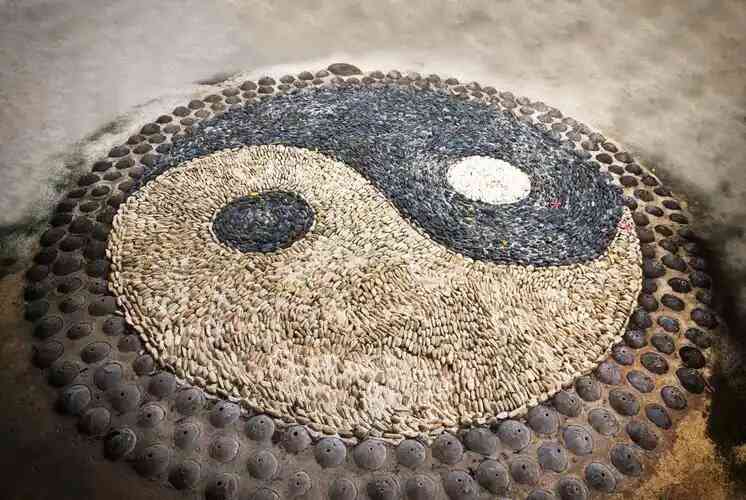
Yin represents qualities such as passivity, gentleness, and darkness, while Yang is associated with activity, strength, and light. In Feng Shui, it is essential to create a balance between Yin and Yang to achieve harmony in a given environment.
For example, a room dominated by Yin energy may feel cold and lifeless, whereas a space overwhelmed by Yang energy may become overly stimulating and stressful.
The Five Elements (五行/wǔxíng)
The Five Elements—Wood, Fire, Earth, Metal, and Water—are integral to Feng Shui, describing the dynamic interactions between different forms of energy. Each element embodies distinct characteristics that influence the energy in a space:
- Wood: Symbolizes growth, creativity, and vitality.
- Fire: Represents passion, transformation, and vibrant energy.
- Earth: Conveys stability, nourishment, and groundedness.
- Metal: Signifies clarity, focus, and structure.
- Water: Evokes calmness, reflection, and fluidity.
In Feng Shui, the careful balance of these Five Elements helps optimize the flow of Qi, contributing to prosperity and well-being. The arrangement of furniture, the selection of colors, and the choice of materials are often aligned with the Five Elements to maximize their effects.
Bagua (八卦/BāGuà)
The Bagua is a map of energy, divided into eight distinct trigrams, each corresponding to a different aspect of life, such as wealth, health, and relationships.
By utilizing the Bagua, one can strategically adjust the layout of their home or office to enhance specific areas of their life. For instance, placing items related to wealth in the designated wealth section of the home can bring financial prosperity.
He Tu (河图/HéTú)
He Tu is an ancient symbol that represents the cosmic order of the universe. It is associated with numerology and is believed to influence the flow of energy within a space.
In Feng Shui, He Tu is used to understand natural rhythms and cycles, offering guidance to practitioners on how to arrange spaces in alignment with these universal forces.
Luo Shu (洛书/LùoShū)
Luo Shu is a nine-grid diagram connected to both the Five Elements and numerology, serving as a vital tool in Feng Shui.
Each number in the Luo Shu grid corresponds to a specific energy and directional force. By applying the principles of Luo Shu, one can optimize the flow of Qi and enhance the overall harmony of a space.
Through Luo Shu, Feng Shui practitioners can arrange a space to align with auspicious numbers and directions, attracting good fortune and positive energy.
Together, these six principles form the foundational framework of Feng Shui, providing a comprehensive guide for creating environments filled with positive energy.
Fundamental Rules of Feng Shui
As Feng Shui theory has progressed, it has incorporated insights from a wide range of disciplines—science, philosophy, religion, art, and culture from both ancient and modern perspectives—culminating in a systematic and intricate discipline. The fundamental rules of Feng Shui are outlined as follows:
Holistic System
Feng Shui regards the environment as an integrated whole, with humans at its core and all elements of nature interconnected and mutually dependent.
The crux of Feng Shui lies in harmonizing the relationships between various subsystems to achieve an optimal balance and arrangement. This overarching rule forms the foundation of Feng Shui, with all other rules branching from it.
Adaptation to Local Conditions
This rule emphasizes the importance of tailoring one’s lifestyle to the local environment based on geographical and climatic conditions. Given the vast differences in climate and topography across China, architectural styles also vary widely.
For instance, in the dry northwest, cave dwellings are favored for their energy efficiency and material conservation, while in the humid, rainy southwest, bamboo houses are preferred for their ability to resist moisture and facilitate airflow. By adapting to local conditions, humans can live in harmony with the natural world.
Mountains and Water
One of the fundamental rules of Feng Shui is the concept of building near mountains and water. Mountains are considered the Earth’s pillars, and water is seen as the life force.
For centuries, people have sought to build homes near these natural elements to harness their benefits and ensure access to vital resources.
Observing Form and Energy
Feng Shui places significant emphasis on the study of terrain and topography, encouraging an analysis of the larger environmental context before considering the specifics of a given location.
For example, continuous mountain ranges, referred to as “dragon veins,” have their own shape and force, which ultimately determine the auspiciousness or inauspiciousness of a plot of land. By examining the form and energy of the land, we gain deeper insights into how the environment influences the living space.
Geological and Water Quality Assessment
Feng Shui maintains that the geological and water quality conditions of a site are essential to the health and well-being of its inhabitants.
For example, damp soil can harbor diseases, making such areas unsuitable for construction. Similarly, the quality of water in the area can impact the health of residents, which is why Feng Shui stresses the importance of optimizing the water environment to enhance living quality.
North-South Orientation
Houses oriented with the back facing north and the front facing south are favored for their ability to remain warm in the winter and cool in the summer.
This orientation allows for optimal use of natural light and airflow, contributing to a comfortable and harmonious living environment.
Balance and Centrality
The rule of balance dictates that all elements must maintain harmony and proportion, whether considering the size, shape, or layout of a house, or its relationship to the surrounding environment.
A typical Feng Shui arrangement emphasizes a central axis, with surrounding buildings and landscapes aligning symmetrically around this focal point to maintain equilibrium.
Harnessing Vital Qi
Feng Shui posits that “Qi” is the life force that sustains all living things.
Different directions and times of day carry different types of Qi—vital Qi (Shēng Qì) and harmful Qi (Shà Qì). Areas abundant in vital Qi are considered favorable and suitable for building, as they contribute to health and prosperity.
By designing spaces that attract and harness this vital Qi, one can promote overall well-being and fortune.
These are the foundational rules of Feng Shui. When applied effectively, these principles allow us to optimize our surroundings and improve our quality of life.
Auspicious Symbols in Feng Shui
In Feng Shui, symbols hold profound cultural significance and are deeply imbued with meaning. Each symbol is closely associated with specific energies and symbolic messages.
These symbols are far more than decorative items, they are potent tools designed to enhance one’s fortune and improve quality of life.
Below are some of the most common Feng Shui symbols and their meanings:
Dragon

The dragon is perhaps the most revered auspicious symbol in Chinese Feng Shui, embodying power, success, and protection. Regarded as the earthly manifestation of the Emperor, the dragon is believed to have dominion over water, attracting abundant wealth and good luck. It is traditionally placed in the eastern part of an office, study, or home to promote career success and personal growth.
Phoenix
The phoenix is a symbol of rebirth, peace, and prosperity. Often paired with the dragon, it represents the balance between Yin and Yang, and is particularly beneficial in marriage, fostering harmony and happiness. The phoenix’s energy helps balance household conflicts, promoting lasting stability in relationships and partnerships.
Qilin
The Qilin symbolizes longevity, justice, and serenity. Known as a protective spirit, it brings good fortune and safeguards the family. It is especially effective in warding off misfortune and protecting the health and safety of loved ones. Commonly placed at the entrance or in the wealth sector of a home, the Qilin helps shield the household from negative influences.
Golden Toad (Money Toad)
The Golden Toad, a three-legged frog with a coin in its mouth, is a potent symbol of wealth. It is believed to attract prosperity, particularly when placed on a desk or near a cash register, helping to draw financial success and enhance business performance.
Gourd
The gourd is a symbol of health and longevity. Its unique shape is thought to absorb and contain negative energy or illness. Often used to neutralize harmful energy, it is typically placed in the bedroom, near the bed, or close to family members who may be ill, offering protection from negative influences and supporting better health.
Elephant
The elephant is a symbol of strength, wisdom, and familial happiness. In Feng Shui, it is believed to bring stable wealth and good fortune, particularly in terms of fertility and harmonious family relationships. Placing an elephant in the northwest corner of the home is said to enhance family unity and foster prosperity for future generations.
Turtle
The turtle symbolizes longevity, stability, and protection. As one of the Four Divine Beasts (Xuanwu), the turtle embodies resilience and enduring strength. It is particularly effective in increasing stability and providing protection for the home. Turtles are typically placed at the rear of the house, symbolizing support and defense, and are believed to safeguard the family from external negative forces while ensuring steady career advancement.
These Feng Shui symbols carry profound meanings and are widely used to bring positive energy and improve life circumstances. When strategically placed according to their symbolic properties, these symbols can enhance personal and familial fortune and help create a more harmonious living environment. By understanding and applying these symbols in the correct locations, their full potential can be realized.
Feng Shui Tools
In Feng Shui, the proper use of tools plays a pivotal role. These instruments assist Feng Shui practitioners in analyzing the terrain, orientation, and layout of buildings, enabling them to create arrangements that enhance prosperity. Below are several key Feng Shui tools and their specific uses:
Tudi Gui
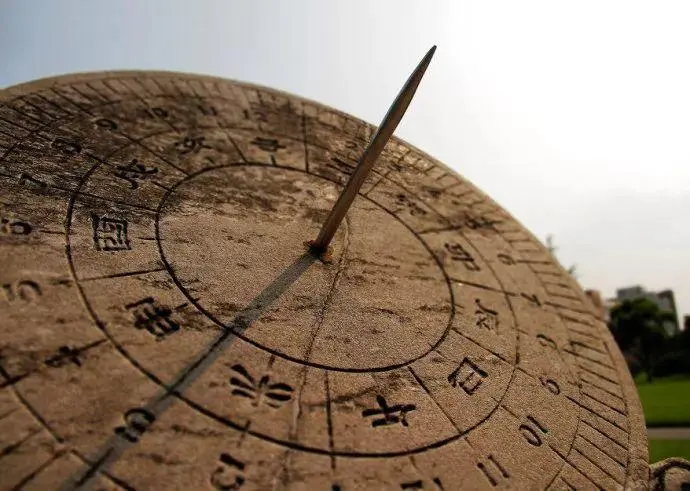
The Tudi Gui is an ancient Chinese astronomical instrument, first introduced during the Zhou Dynasty, designed to measure the length of shadows. By analyzing the shadow length, ancient scholars could determine solar terms and the time of year. In Feng Shui, the Tudi Gui is used to assess terrain and the orientation of buildings, optimizing the layout to improve the flow of energy.
Si Nan

The Si Nan is an early directional tool, considered a precursor to the modern compass. Made from natural magnetite, it has a spoon-like shape. When placed on a smooth surface, the long handle naturally points south. In Feng Shui, the Si Nan is used to establish the direction of a building, aiding in the selection of an ideal Feng Shui layout to enhance the occupant’s fortune and overall life quality.
Ruler

A ruler is commonly used in Feng Shui to measure the dimensions and orientation of buildings. Feng Shui practitioners analyze these measurements to assess the building’s harmony with its surroundings, ensuring an optimal layout that maximizes the Feng Shui benefits.
Liu Ren Style Plate
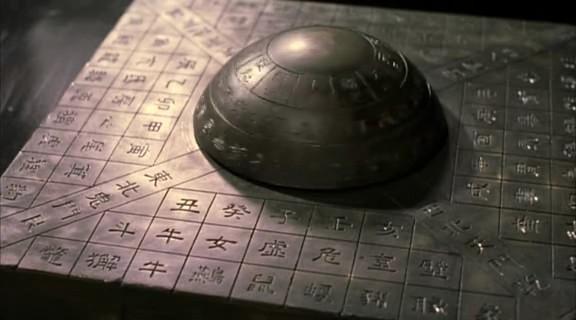
The Liu Ren Style Plate is an ancient divination tool that is also applied in Feng Shui. It utilizes the arrangement of the Heavenly Stems, Earthly Branches, Five Elements, and Bagua to forecast the fate of a property or location. By adjusting the Feng Shui layout, it aims to improve living conditions and enhance the overall fortune of the occupants.
Bagua Mirror
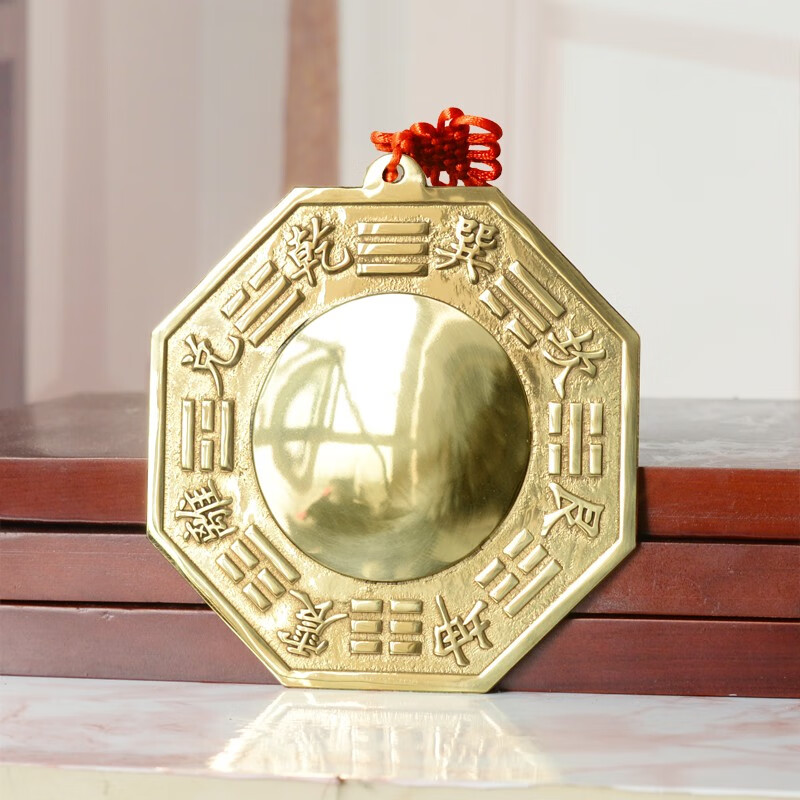
The Bagua Mirror is a widely used tool in Feng Shui to deflect negative energy (sha qi). It comes in two forms: the flat mirror, which blocks external harmful energies such as sharp corners or towering buildings, and the convex mirror, which reflects harmful energy back to its source. Caution is advised when using these mirrors; they should not be overused, as excessive placement can disrupt the harmony of surrounding environments.
Compass
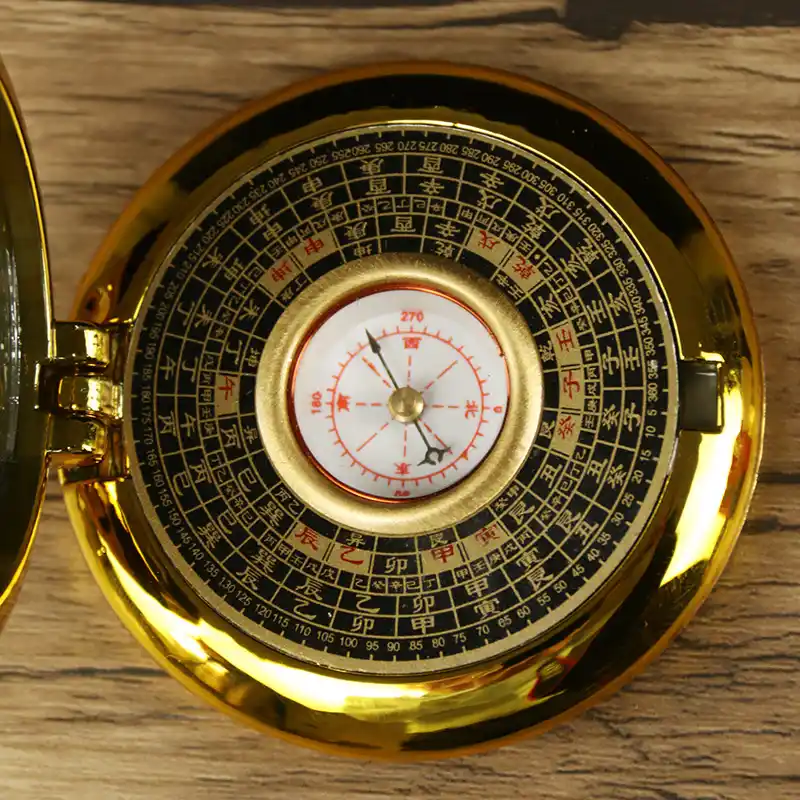
The compass has long been used in China to determine direction, and it remains an essential tool in Feng Shui for measuring the orientation of buildings and land. However, the compass needle can be subtly influenced by local magnetic fields, so it is important to take environmental factors into account when using this tool.
Luopan
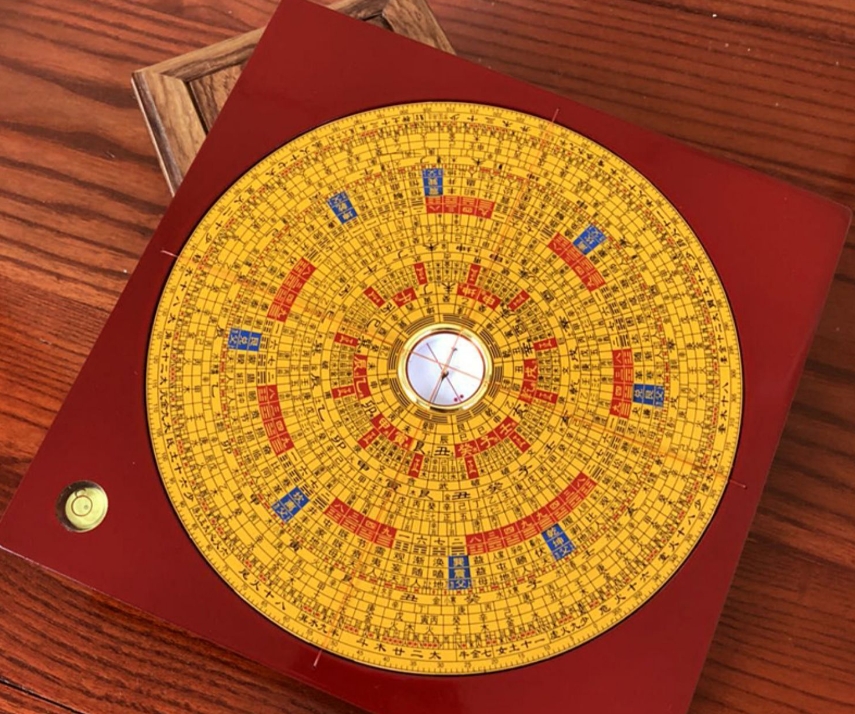
The Luopan is the quintessential tool of a Feng Shui master. It combines a compass with Feng Shui principles to determine the orientation of a building, trace the flow of dragon veins, and calculate the influence of celestial events and solar terms. The intricate markings on the Luopan are critical for making precise assessments of direction and environmental impact.
By using these tools with precision, Feng Shui practitioners can guide individuals in selecting the optimal building layouts, improving their fortunes, and fostering a more harmonious and prosperous life.
The Application of Feng Shui
By thoughtfully arranging spaces and optimizing their environment, Feng Shui can infuse every aspect of life with positive energy and balance. Whether it’s a serene home, a dynamic office, or a commercial setting, Feng Shui can enhance the energy flow and functionality of each space according to its purpose.
Feng Shui House
- Selecting a location: When choosing a house address, it is essential to focus on the balance of natural elements. Key factors such as sunlight, water sources, and terrain help to ensure a harmonious and prosperous living environment.
- Designing the House: Feng Shui principles guide the layout and structure of each room, including the placement of the front door, windows, and walls. Thoughtful design improves the flow of “qi” throughout the home, fostering health and peace of mind.
Feng Shui Home
- Bedroom Feng Shui: The bedroom, as a space for rest and intimacy, should be arranged to support the body’s energy flow. Proper bed placement, reducing electronic devices, and using soft, calming colors can significantly improve sleep quality and relationships.
- Living Room Feng Shui: As the heart of family interaction, the living room should be arranged to facilitate communication. Incorporating natural light creates a warm and welcoming atmosphere for emotional exchange.
- Kitchen Feng Shui: Often referred to as the “heart of the home,” the kitchen influences both health and prosperity. A clean and well-organized kitchen, along with the proper placement of the stove, ensures balanced energy flow and enhances family well-being.
- Study Feng Shui: The layout of the study should promote focus and creativity. A sturdy desk, ample lighting, and an orderly environment can stimulate productivity and personal development.
- Bathroom Feng Shui: The bathroom is an area where energy can easily dissipate, so it is vital to maintain cleanliness and good ventilation. Adding plants or mirrors can help retain energy flow, keeping the space fresh and balanced.
Feng Shui for Offices and Commercial Spaces
- Office Feng Shui: Thoughtful desk placement and space design can significantly enhance work efficiency and convey authority, contributing to a productive and positive work environment. Feng Shui principles also help to improve focus and creativity, supporting career advancement.
- Home Office Feng Shui: A home office provides flexibility and can significantly boost both work performance and overall quality of life. With the right Feng Shui layout, distractions are minimized, focus is enhanced, and the home’s energy is optimized, creating a harmonious balance between work and home life.
- Commercial Feng Shui: In business, the Feng Shui of a commercial space plays an essential role in enhancing customer experience and increasing profits. Strategic placement of entrances, cash registers, and lighting can attract more customers, build trust, and increase the flow of wealth.
Feng Shui for Marriage
To foster a harmonious and loving marital relationship, Feng Shui recommends creating a balanced and nurturing home environment. Key elements include maintaining a tidy bedroom, using soft lighting, and incorporating paired items such as lamps or artwork to symbolize the unity of the couple.
By incorporating these Feng Shui principles into everyday life, individuals can improve the energy flow in their environments, resulting in greater peace, balance, and success across all areas of life.
Feng Shui’s Influence on Health, Wealth, and Relationships
- Wealth: Attracting financial success is achieved through proper Feng Shui arrangements, such as creating a wealth corner, placing a wealth bowl, or decorating the financial area with purple tones to enhance prosperity.
- Enhancing Relationships: Feng Shui arrangements in the bedroom, love corner, and family spaces can strengthen communication and intimacy, fostering familial harmony and social well-being.
- Health and Happiness: Balancing the energy in key areas like the kitchen and bedroom helps to improve health, boost vitality, and cultivate happiness, enhancing the overall quality of life.
Feng Shui Plants
In Feng Shui, plants are categorized into wealth-attracting, health-boosting, and air-purifying types, each serving a distinct purpose.
Every plant carries its own unique symbolic meaning and placement in Feng Shui, helping to optimize the energy flow in both home and office environments, bringing prosperity and tranquility.
Wealth-Attracting Plants
Wealth-attracting plants are symbolic of financial prosperity, abundance, and success in business ventures. The most well-known wealth plants are the Money Tree, Pachira, and Lucky Bamboo.
The Money Tree, with its thick and robust leaves, represents wealth accumulation and is typically placed in the southeast corner—the “wealth corner”—of a home or office to enhance financial luck.
The Pachira, aptly named for its association with wealth and prosperity, is often positioned at the entrance of offices or stores to attract clients and encourage business growth.
Lucky Bamboo, a low-maintenance plant, is associated with stability and career progression, making it an excellent choice for placement in hallways or on desks to symbolize growth and success.
Health Plants
Health plants are commonly placed throughout the home to improve the well-being of family members. Aloe Vera, Spider Plant, and Pothos are among the most popular health plants.
Aloe Vera not only purifies the air but is also known for its potent “growth” energy, which boosts the health and vitality of the home’s residents.
The Spider Plant, with its hardiness, thrives in any room—particularly in bedrooms and living areas—helping to cleanse the air and calm the environment.
Pothos, revered for its durability and energy, enhances air quality and infuses the space with vitality, supporting both physical health and emotional balance.
Air-Purifying Plants
For individuals seeking to improve indoor air quality and foster a peaceful atmosphere, air-purifying plants are the ideal solution. Popular options include Ivy, Snake Plant, and Monstera.
Ivy, often placed on windowsills, in kitchens, or bathrooms, is highly effective in eliminating mold and bacteria from the air.
The Snake Plant, perfect for the bedroom, continues to release oxygen at night, thereby promoting restful sleep and better air quality.
Monstera, not only an attractive ornamental plant but also a powerful purifier, absorbs formaldehyde, making it an excellent addition to living rooms or office spaces to create a healthier and more vibrant environment.
Feng Shui Colors
In Feng Shui, color selection goes beyond mere aesthetic appeal, as it directly influences energy, mood, and fortune. Each color corresponds to a specific element in the Five Elements theory and holds its own symbolic significance.
For example, red represents the Fire element and is typically used to infuse a space with vitality and passion. It is best suited for the southern part of the home. In contrast, blue symbolizes the Water element, fostering a calming and soothing atmosphere. Placing blue in the east or southeast enhances balance and harmony.
When decorating a home or office, choosing the right Feng Shui colors for different areas is crucial.
In the bedroom, gentle, warm tones like soft pink or beige are ideal for creating a serene environment that promotes restful sleep. For the living room, brighter hues like green or yellow are recommended to boost energy levels and add warmth. By aligning colors with the intended function of each space, you not only enhance the aesthetic appeal but also foster a harmonious flow of Yin and Yang energy.
Furthermore, many individuals choose clothing or accessories based on Feng Shui colors to improve their personal fortune.
According to the Five Elements theory, a person’s lucky colors are linked to their astrological profile. Choosing the right colors can elevate one’s luck, wealth, and health.
For instance, individuals associated with the Fire element should wear red or purple, while those linked to the Water element should opt for blue or black. By thoughtfully incorporating Feng Shui colors in both home decor and personal items, you can invite more positive energy into your life.
The True Understanding of Feng Shui
To dismiss Feng Shui as mere superstition is to overlook its profound significance. Likewise, the belief that Feng Shui adjustments can instantly resolve all problems is an unrealistic notion.
The real value of Feng Shui lies in its ability to create an environment that fosters mental and physical health while enhancing overall quality of life. While it cannot alter the course of one’s destiny, it can certainly optimize the experience of life in meaningful ways.
In my approach to Feng Shui, I emphasize personal growth and transformation. A positive, optimistic outlook, combined with the courage to face challenges and the drive for continuous self-improvement, enables anyone to find happiness and success, regardless of the circumstances.
Feng Shui adjustments can serve as a supportive tool, but ultimately, it is our own choices and efforts that shape our destiny.
FAQ
1.What is feng shui, and does it work?
Feng Shui is an ancient Chinese philosophy that seeks to enhance harmony and smoothness in life by adjusting the environment. It focuses on optimizing the flow of energy (or “chi”) within living or working spaces, with the goal of improving health, happiness, and prosperity.
Whether or not it “works” is subjective. Some people report positive changes after applying Feng Shui principles, while others may not see the same results. The effectiveness of Feng Shui is deeply personal and depends on one’s beliefs and circumstances.
Nonetheless, it offers valuable insights that can help us perceive the relationship between our surroundings and life from a more peaceful and balanced perspective.
2.Is feng shui real?
Feng Shui is indeed real. It is a traditional practice that combines elements of environmental science, architecture, and psychology.
Over centuries of practice and refinement, it has developed into a complex and rich theoretical system. Feng Shui works by adjusting environmental factors—such as orientation, layout, and placement of objects—to influence one’s fortune.
While many people use it as a guiding principle today, its authenticity and impact ultimately depend on individual belief systems and the outcomes experienced.
3.Is feng shui evil?
Feng Shui is not evil. It is rooted in the philosophy of natural harmony and emphasizes the balance between humanity, earth, and heaven.
Feng Shui does not involve mysticism or supernatural powers; instead, it focuses on improving the environment to foster peace and happiness. Rather than being a mystical practice,
Feng Shui serves as a guide for living, helping people to better understand their relationship with their surroundings. As such, it is not associated with evil.
4.Is feng shui scientific?
Some Feng Shui principles can indeed be explained scientifically, such as those concerning airflow, lighting, and the impact of plants on a space.
While Feng Shui incorporates traditional symbolism and philosophical concepts, many modern practitioners also integrate elements from fields like architecture and psychology to inform space design.
In this way, Feng Shui combines both scientific and philosophical elements in its practice.
5.Can feng shui predict the future?
Feng Shui is not, strictly speaking, a tool for predicting the future. Its primary function is to optimize the current environment to enhance life quality and fortune, but it does not provide specific “prophecies” or “predictions.”
However, experienced Feng Shui practitioners can sometimes discern factors that may influence a person’s life by analyzing the environment and their “Five Elements” information, offering suggestions for adjustments that may help improve well-being and avoid potential misfortune.

